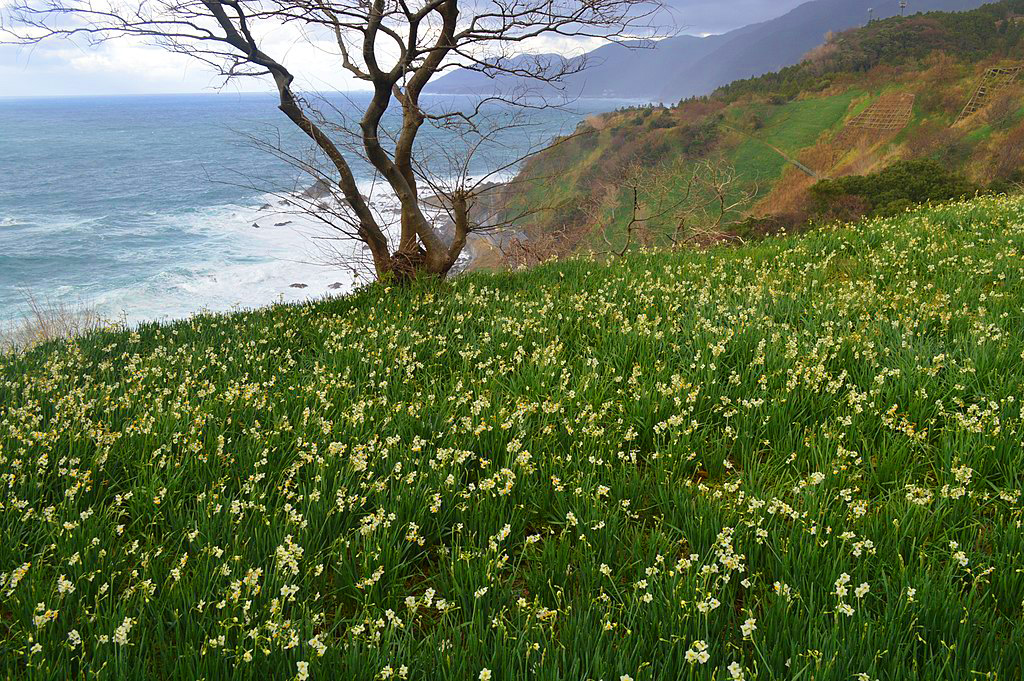
With their clusters of small, fragrant flowers, the group of daffodils known as tazettas have been popular for hundreds if not thousands of years. In Japan they long ago escaped gardens to make themselves at home in the wild, as described at botanyboy.org:
“Narcissus tazetta . . . can be found in various stages of bloom anytime from late December through February along the roadsides and fields of southern Japan. . . . N. tazetta is a close relative to the most famous member of the [tazetta] group, Narcissus papyraceus, the common paperwhite. . . .
“It is the corona that gives this plant the species epithet, tazetta, from the Italian word tazza, which is a shallow wine cup on a pedestal-like base. . . . Their odor is intense, but not unpleasant, and much more floral scented than the musty smell of N. papyraceus. . . .
“In Japan, N. tazetta can be found in the warmer regions of Honshu, Kyushu, and Shikoku, but is not native. It is thought that it came from China centuries ago . . . but very likely was brought to that country in the distant past from the Near East along trading routes. In Japan it is found on roadsides, on rice paddy embankments, along rivers, and in vacant lots in both agricultural and urban environments. A number of different flower forms and hybrids are frequent garden plants in Japan and elsewhere [including ‘Early Pearl’, ‘Erlicheer’, ‘Geranium’, ‘Grand Primo’].
In Japanese the tazettas are called “suisen, meaning ‘water wizard.’ . . . This is a derivative of the Mandarin name, shui xian hua, meaning ‘water goddess flower.’”
Most of these “water wizards” are easy to force on pebbles and water, and they’re great in gardens from zones 6-8(10WC). Why not order a few to try for yourself?












